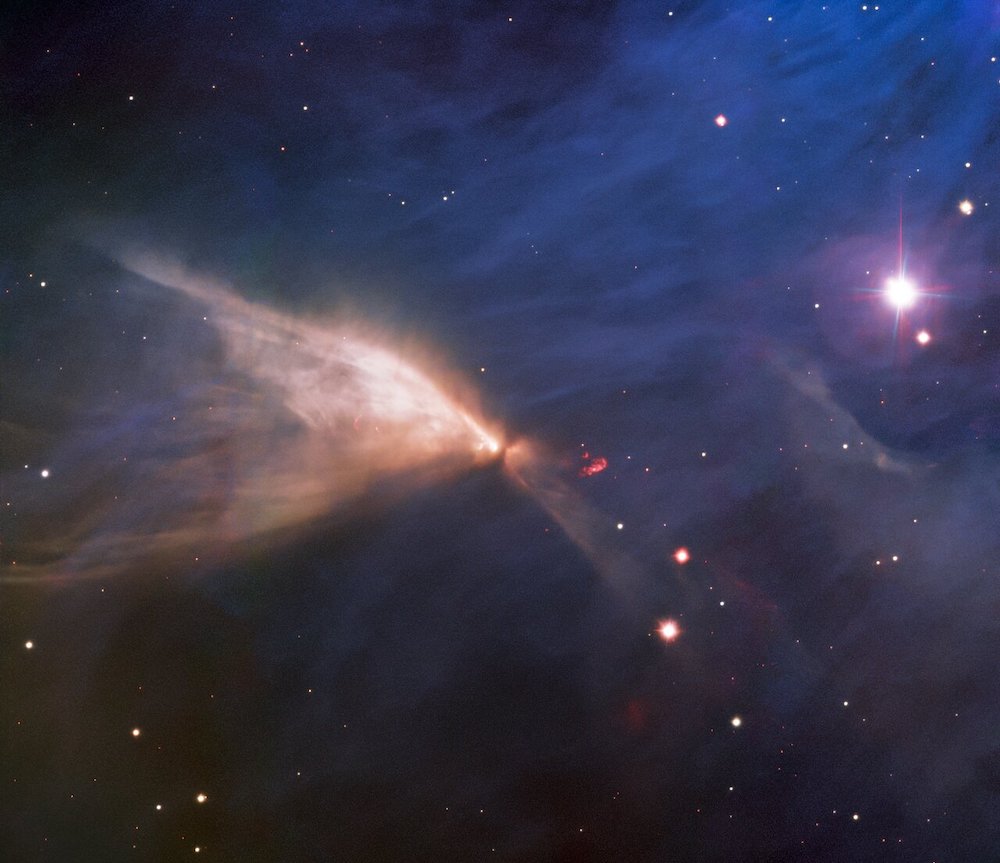Astronomers have discovered a young star hidden behind a single-winged butterfly nebula in the constellation Chamaeleon.
” data-medium-file=”https://i1.wp.com/langitselatan.com/wp-content/uploads/2021/12/Nebula-Chamaeleon.jpeg?fit=300%2C259&ssl=1″ data-large-file=”https://i1.wp.com/langitselatan.com/wp-content/uploads/2021/12/Nebula-Chamaeleon.jpeg?fit=1000%2C863&ssl=1″ loading=”lazy” width=”1000″ height=”863″ alt=”” class=”wp-image-34254″ srcset=”https://i1.wp.com/langitselatan.com/wp-content/uploads/2021/12/Nebula-Chamaeleon.jpeg?w=1000&ssl=1 1000w, https://i1.wp.com/langitselatan.com/wp-content/uploads/2021/12/Nebula-Chamaeleon.jpeg?resize=300%2C259&ssl=1 300w, https://i1.wp.com/langitselatan.com/wp-content/uploads/2021/12/Nebula-Chamaeleon.jpeg?resize=768%2C663&ssl=1 768w, https://i1.wp.com/langitselatan.com/wp-content/uploads/2021/12/Nebula-Chamaeleon.jpeg?resize=58%2C50&ssl=1 58w, https://i1.wp.com/langitselatan.com/wp-content/uploads/2021/12/Nebula-Chamaeleon.jpeg?resize=870%2C751&ssl=1 870w” sizes=”(max-width: 1000px) 100vw, 1000px” data-recalc-dims=”1″/>
Single-winged butterfly nebula. This cloud structure is a mixture of gas and dust known as the Chamaeleon Infrared Nebula. The gas in this nebula emits light in a variety of wavelengths. This nebula can be seen in visible light. However, as the name implies, the Chamaeleon nebula actually looks bright when viewed with a telescope that can see infrared light. This is where the name infrared was given to the Chamaeleon nebula.
Chamaeleon Infrared Nebula
The Chamaeleon Infrared Nebula featured on this page was captured by astronomers during observations with the Gemini South Telescope at Gemini Observatory, Chile.
As the name implies, this nebula and dark cloud is in the constellation Chamaeleon, one of the constellations in the southern sky. Of course, observers in the southern hemisphere can observe this gas and dust cloud.
The Chamaeleon nebula structure is near the center of the giant dark cloud Chamaeleon I, one of the closest star formation areas to the Milky Way. The close neighbors of the dark clouds of Chamaeleon I are the dark clouds of Chamaeleon II and Chamaeleon III. These three dark clouds form the gigantic area of star formation that we know as the Chamaeleon Complex. Because of its size, the Chamaeleon complex occupies almost all of the area of the Chamaeleon constellation.
The Chamaeleon Nebula has an interesting story.
Right at the center of the nebula is the engine from the Chamaeleon nebula. A low-mass star with a mass less than the Sun. We can find this star as a bright spot in the center of the nebula, near the division of the wing.
This hidden cold young star is spewing large amounts of fast-moving gas. The gas emitted by the star is what carves a tunnel in the interstellar cloud where stars form.
The shape of the wings in the nebula comes from the emission of infrared light and visible light from the star at the center. The visible and infrared light emitted by the star escapes along tunnels in the cloud and spreads out to form walls.
Bright Red Stains
Close to the center of the photo or to the right of the center of the photo, there is a bright red object that looks like a smear or red smudge on the photo. This bright object is Herbig-Haro (HH), which is commonly found near newly formed stars. Herbig-Haro objects form when fast-moving gas ejected from a star collides with gas from a nebula or a nearby slow-moving gas cloud.
This is what happened with the HH 909A, the bright red object in the photo. Jets or jets of gas that shoot out very quickly from the star at the center of the single-winged butterfly cloud collide with gas from the slow-moving nebula in the vicinity.
Amazing isn’t it?
Not only that. Astronomers suspect that the dark band at the center of the Chamaeleon Infrared Nebula is a circumstellar disk, a reservoir of gas and dust orbiting the star. Circumstellar disks are indeed found in young stars and the material in them is a stock for forming planets.
The faint blue background is the reflection of light from nearby stars that are not visible in the photo.
cool facts
American astronomer Sherburne Wesley Burnham was the first to observe the Herbig-Haro object in the late 1800s. It wasn’t until the 1940s that this object was seen as a light-emitting nebula when George Herbig and Guillermo Haro studied it in more detail.
Related
–

:quality(80)/cdn-kiosk-api.telegraaf.nl/70f8f99e-63e8-11ec-9623-02d2fb1aa1d7.jpg)
